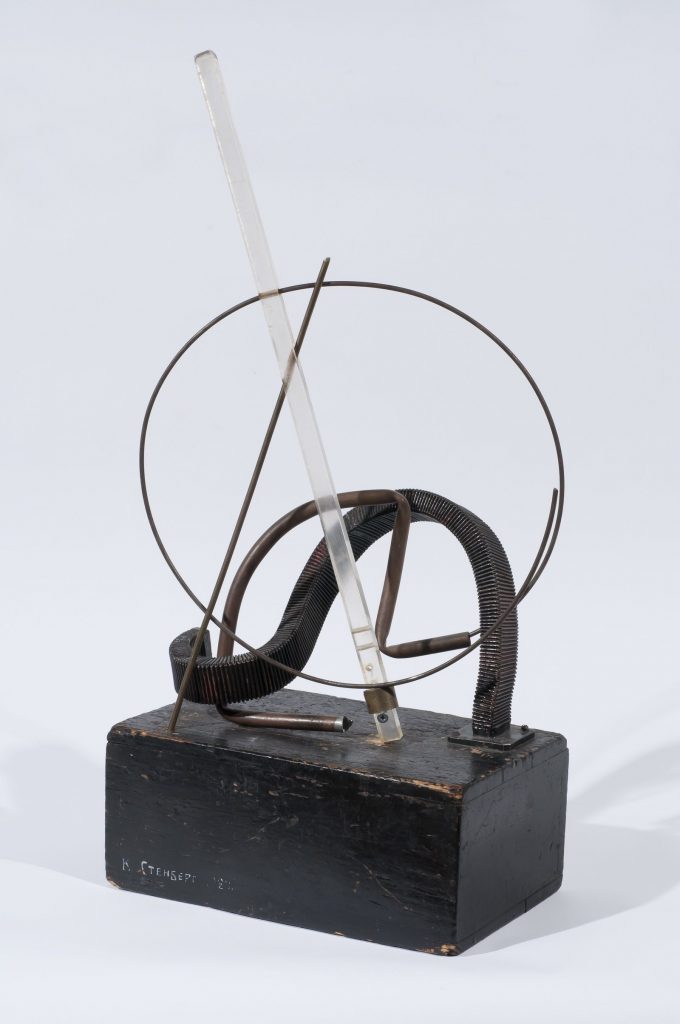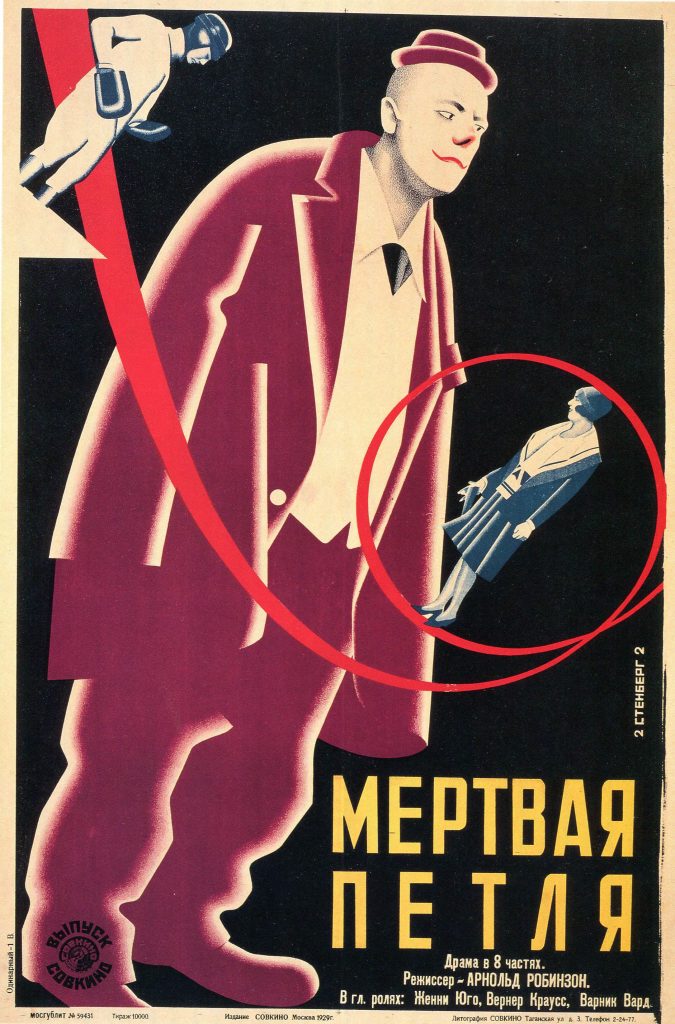
Vladimir Stenberg (1899-1982) and Georgii Stenberg (1900-1933-he died in a motorcycle accident) were born in Soviet Russia to a Swedish father, who worked as a painter, and a Latvian mother. The Stenberg Brothers were initially active as sculptors, theatre designers, architects, and draftsmen; even designing women’s shoes and rail carriages. They made their biggest mark as radical poster designers during the Constructivist graphic design movement, specifically in propaganda and film posters.
According to communist Russia, fine art was useless. Many artists worked around this by creating avant-garde posters. Posters and film became important tools for the state because they were able to convert illiterate citizens through government-sanctioned imagery. The Stenberg Brothers started studying at the State Free Art Workshops (SVOMAS) at the beginning of the civil war (1917), which highly informed their visuals. They founded the Society of Young Artists (OBMOKhU) with some of their comrades in 1919, which aimed to design compelling posters for the Bolshevik cause. In fact, the distribution of propaganda was considered a desirable and honourable practice in Russia at the time, and the Stenbergs excelled at this.
Our primary device is montage…[but] we do not neglect Construction. Ours are eye-catching posters which, one might say, are designed to shock. We deal with the material in a free manner…disregarding actual proportions…turning figures upside-down; in short, we employ everything that can make a busy passerby stop in their tracks.
Vladimir Stenberg (1928)
A BROTHERLY BOND
In the book “Stenberg Brothers: Constructing A Revolution in Soviet Design” written by gallery curator and Professor of Design History and Theory, Christopher Mount, it is stated that Georgii and Vladimir Stenberg “shared from an early age an unusually strong fraternal bond.” They would work on their posters simultaneously, rushedly alternating positions around the piece until it was completed. All of their joint works featured the signature 2 Stenberg 2, supporting the idea of the collective rather than the individual, as proposed by the Bolsheviks.
The Stenberg Brother’s posters are defined by an exaggerated use of scale, a sense of movement, and dynamic use of colour and typography. They would often base the visuals on stills from the films. Many of their peers and other artists in the field ended up imitating them due to the effectiveness of their designs. When Josef Stalin declared socialist realism as the official artistic medium, the brothers became little known and almost lost to history.
Information Citations:
https://thecharnelhouse.org/2015/08/05/the-stenberg-brothers-and-the-art-of-soviet-movie-posters/
https://www.moma.org/interactives/exhibitions/1997/sternbergbrothers/
https://en.wikipedia.org/wiki/Constructivism_(art)#Constructivist_graphic_design
https://en.wikipedia.org/wiki/Stenberg_brothers
https://tumblr.austinkleon.com/post/134238069611
https://www.moma.org/documents/moma_catalogue_250_300063174.pdf







